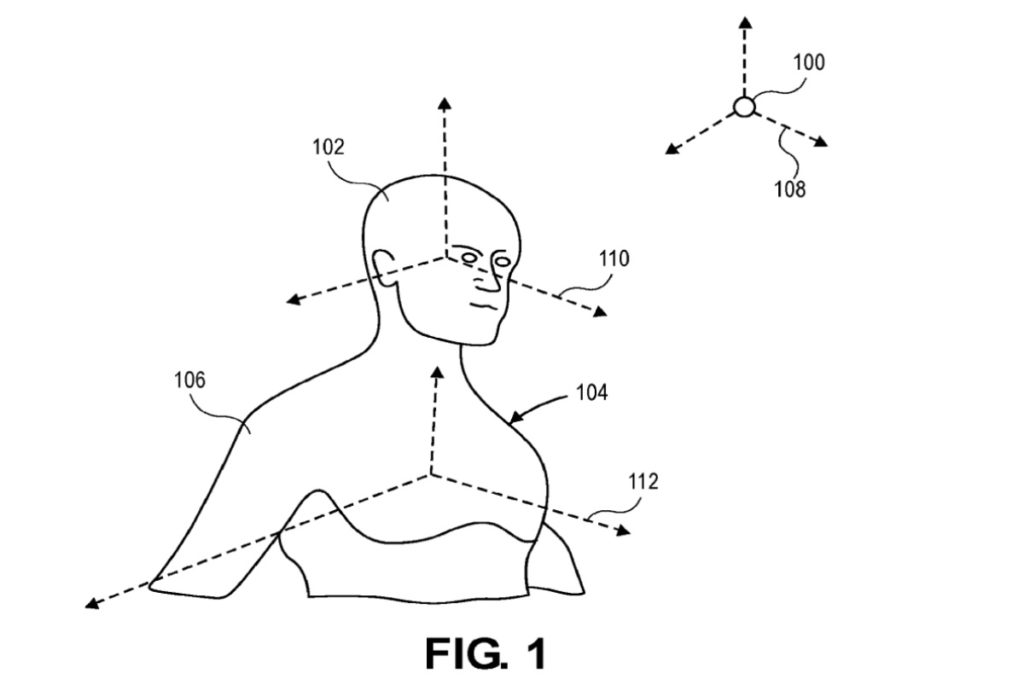Future Apple devices may offer spatial audio reproduction based on a user’s body position. The tech giant has been granted a patent (number US 12010506 B2) for “Spatial Audio Reproduction Based on Head-to-torso Orientation”
About the patent
Aspects related to audio systems are disclosed. More particularly, aspects related to audio systems used to render spatial audio are disclosed in the patent.
Spatial audio can be played using headphones that are worn by a user. For example, the headphones can reproduce a spatial audio signal communicated by a device to simulate a soundscape around the user. Apple says an effective spatial sound reproduction can recreate sounds such that the user perceives the sound as coming from a location within the soundscape external to the user’s head, just as the user would experience the sound if encountered in the real world.
When a sound travels to a listener from a surrounding environment in the real world, the sound propagates along a direct path, e.g., through air to the listener’s ear canal entrance, and along one or more indirect paths, e.g., by reflecting and diffracting around the listener’s head or shoulders. As the sound travels along the indirect paths, artifacts can be introduced into the acoustic signal that the ear canal entrance receives.
User-specific artifacts can be incorporated into binaural audio by signal processing algorithms that use spatial audio filters. For example, a head-related transfer function (HRTF) describes how a sound located somewhere in space, relative to a listener’s body, is filtered, e.g., reflected or diffracted around the listener’s head, torso, and outer ear, before entering their auditory system. The HRTF-described cues allow the auditory system to determine where in space a sound is coming from.
To implement accurate spatial audio reproduction, a virtual audio system can use the HRTF to create the illusion that sound is coming from somewhere in space. More particularly, an HRTF-related audio filter can be applied to an audio input signal to shape the signal in such a way that reproduction of the shaped signal realistically simulates a sound traveling to the user from the relative location at which the HRTF was measured. Accordingly, a listener can use simple stereo headphones to create the illusion of a sound source somewhere in a listening environment by applying the binaural audio filter to the audio input signal.
Existing virtual audio rendering systems are required to know the user’s head orientation relative to the virtual sound source in order to select an appropriate head-related transfer function (HRTF). Typically, the HRTF is defined and measured as having a dependence on an azimuth angle, elevation angle, and sometimes a distance between the virtual sound source and the user’s head.
Definitions of the HRTF dataset up until now do not encapsulate the dimension related to the orientation of the rest of the body relative to the user’s head. More particularly, changes away from a nominal forward-facing head-to-torso orientation are not accounted for when using a HRTF dataset; the torso is assumed to rotate and move with the head.
Apple says that this means that a user that turns his head to the right while keeping his torso stationary, e.g., facing forward, will have the unsettling experience of hearing sound as though he turned his torso to the right concurrently with his head. In other words, the virtual audio rendering systems do not differentiate between cases when the head and torso are moved separately and cases when the head and torso are moved together.
Apple says that this disregard for head-to-torso orientations by existing virtual audio rendering systems results in spatial audio renderings that don’t accurately reproduce the effects that the torso orientation has on sound sources in real life. Apple’s patent involves a media system and a method of using the media system to accurately reproduce virtual audio taking into account a user’s head orientation relative to the user’s torso.
Summary of the patent
Here’s Apple’s abstract of the patent: “A media system and a method of using the media system to reproduce spatial audio based on head-to-torso orientation, are described. The method includes determining a head-to-source orientation and a head-to-torso orientation based on head orientation data generated by a head tracking device. Determining the head-to-torso orientation includes determining torso movements based on movements of the head.
“The torso can be determined to move when the head movements meet a head movement condition, such as a predetermined angle of movement or pattern of movement. A binaural audio filter that is based on a head-related transfer function corresponding to both the head-to-source orientation and the head-to-torso orientation is applied to an audio input signal to generate an audio output signal. The audio output signal is played to accurately recreate spatial audio having sounds emitted to the user by a sound source. Other aspects are also described and claimed.:
I hope that you’ll consider becoming a patron of Apple World Today. Prices range from $2 a month to $10 a month. You can sign up here. Thanks in advance for your support.
Article provided with permission from AppleWorld.Today

